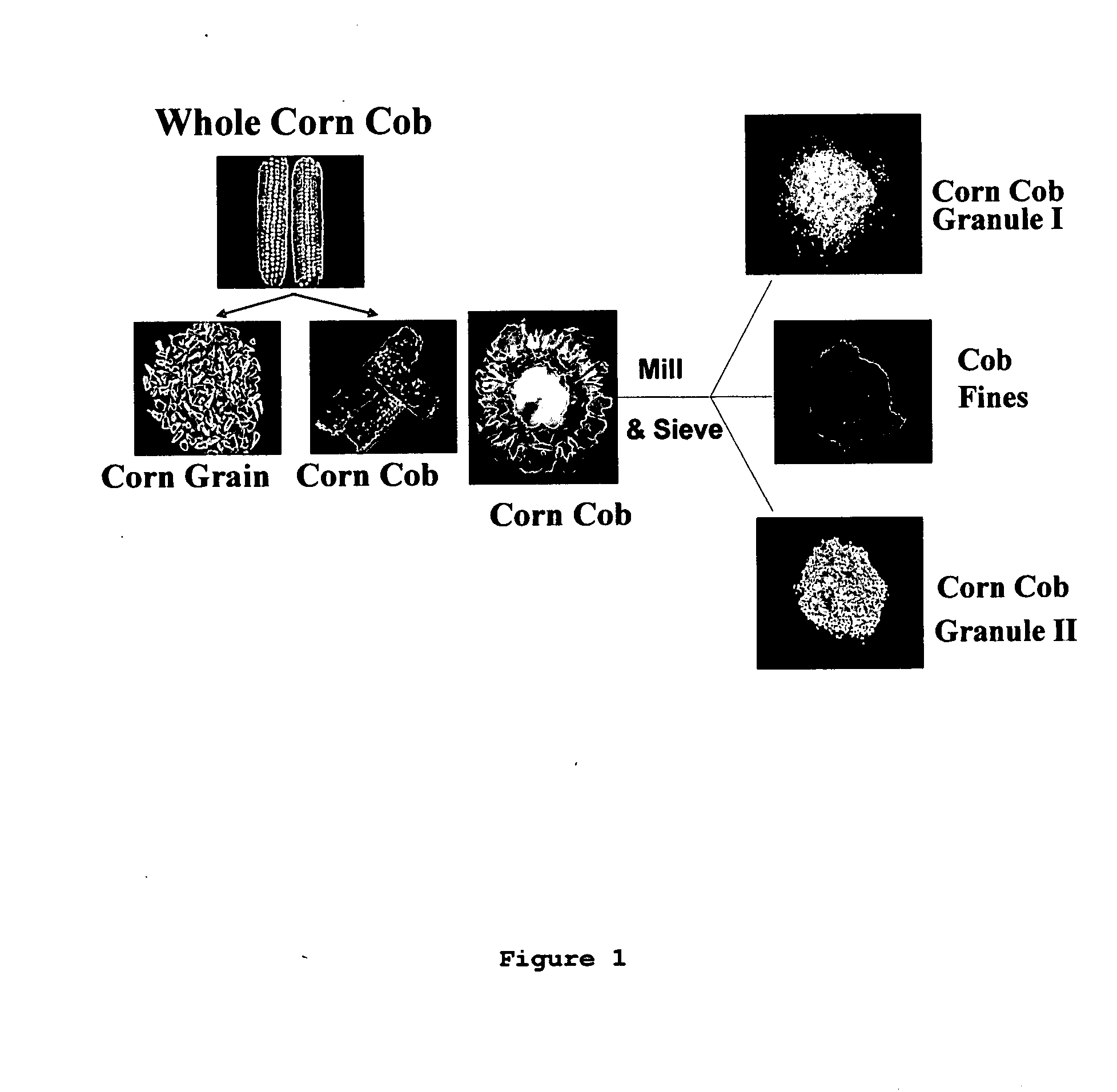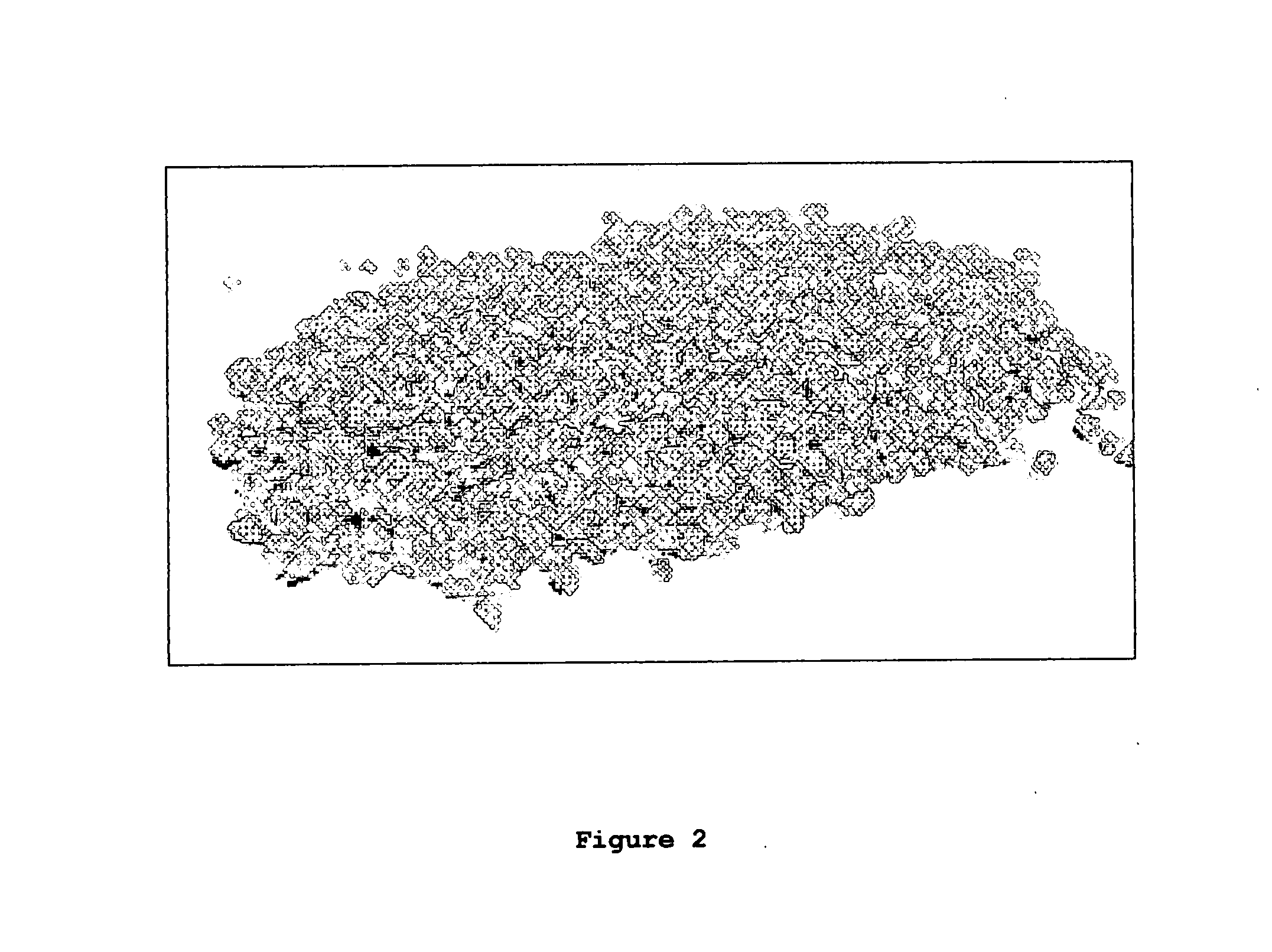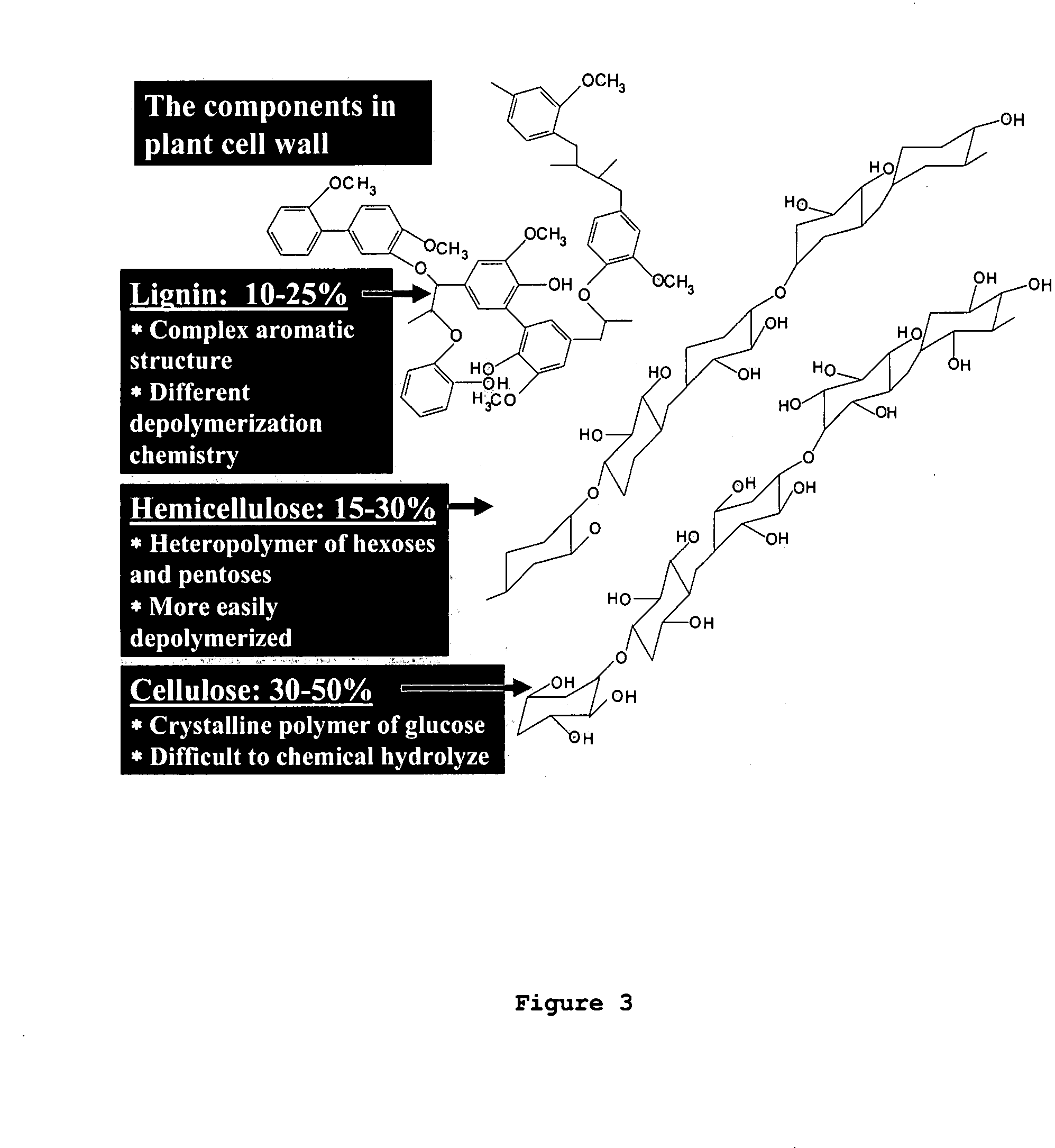Composite materials from corncob granules and process for preparation
a technology of corncob granules and composite materials, applied in the field of biocomposites, can solve the problems of poor organoleptic properties, ductility and impact resistance loss of composite materials, and the unlikely cost of compounding to be much mor
- Summary
- Abstract
- Description
- Claims
- Application Information
AI Technical Summary
Benefits of technology
Problems solved by technology
Method used
Image
Examples
example 1
[0057] The following steps were fabricated biocomposites from corncobs and corn-based plastic, PLA.
[0058] 1. Corncob granules (Granule I) (the experimental product name was BCRL-20): Biomass Conversion Research Laboratory-20) is a byproduct from corn stover. The corn stover was milled using a regular mixer for 10 minutes, and sieved for another 10 minutes using different mesh size screens. The material collected on the 10 and 20-mesh screen is called corncob. This material occupies 10% of the whole corn stover on the weight basis. Moreover, corncob granules (Granule II) of about 14 to 20 mesh (U.S. Standard Screen sizes with sieve openings of 1.41 mm to 0.84 mm), or larger, were obtained by hammer milling the corncobs, after removing the kernel / grains from it. The granules were separated from the finer, lighter husk portion by aspiration. During the process of grinding and sieving corn stover, we found some corncob granular material (called BCRL-10), which was tough to grind. This ...
example 2
[0065] Corncob based bio bio-composites were prepared by using a standard industrial scale or lab scale extruder (such as ZSK-30 Werner and Pflider (WP) Twin-screw Extruder), (FIG. 10) and the desired parts were made by using injection molding. The corncobs and bio-polymer matrix resin, mixed at a ratio of 50 wt % or 50 wt %, were fed into a ZSK-30 WP twin-screw extruder with an L / D of 30. A uniform temperature of 183° C. was maintained for all the six zones of the extruder. The PLA matrix resin was fed at 46.5 g / min, while the corncobs were fed through a side feeder at a rate of 20 g / min.
[0066] The screw speed was set at 100 rpm. The first three minutes of the extrudate was discarded and then the strands of the extrudate were collected and chopped to form pellets using a pelletizer.
example 3
[0067] The current invention can also provide the methods how to prepare corncob reinforced composites with different matrices besides PLA.
[0068] A polypropylene (PP) based composite was made using the twin-screw extruder of Example 2. Compounding were carried out at a screw speed of 100 rpm and extruder temperatures were set at 180° C. (zone 1 to zone 3), 183° C. (zone 4), 184° C. (zone 5) and 185° C. (zone 5). A pelletizer was used to chop the strands into pellets, and then the pelletized composite specimens were molded into tensile coupons using the injection molding.
[0069] Corncob based PLA composites were tested for mechanical properties (e.g., flexural modulus, impact resistance) and thermo-mechanical properties (e.g., dynamic mechanical properties). Corncob-matrix adhesion was promoted by corncob surface modifications using the Ammonia Fiber Explosion (AFEX) treatment as well as with the silane coupling agent. The final composites materials have improved physical properties...
PUM
| Property | Measurement | Unit |
|---|---|---|
| Percent by mass | aaaaa | aaaaa |
| Temperature | aaaaa | aaaaa |
| Temperature | aaaaa | aaaaa |
Abstract
Description
Claims
Application Information
 Login to View More
Login to View More - R&D
- Intellectual Property
- Life Sciences
- Materials
- Tech Scout
- Unparalleled Data Quality
- Higher Quality Content
- 60% Fewer Hallucinations
Browse by: Latest US Patents, China's latest patents, Technical Efficacy Thesaurus, Application Domain, Technology Topic, Popular Technical Reports.
© 2025 PatSnap. All rights reserved.Legal|Privacy policy|Modern Slavery Act Transparency Statement|Sitemap|About US| Contact US: help@patsnap.com



